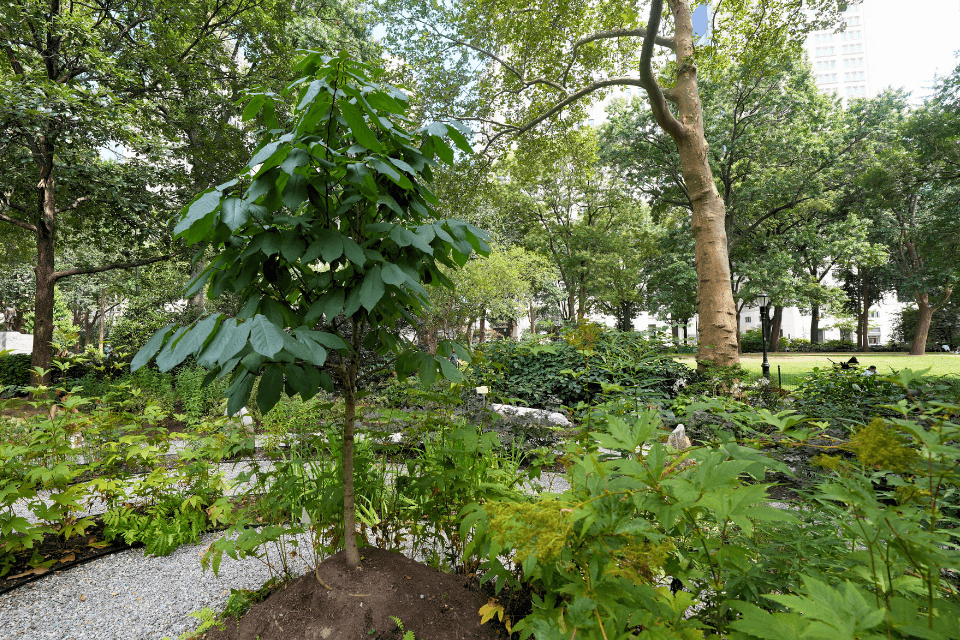This site uses cookies – Learn more.
“Gardens of Renewal” Spotlight Series: Pawpaw Tree
“Gardens of Renewal” Spotlight Series: Pawpaw Tree
As we are nearing the end of the Gardens of Renewal installation at MSP, it seems a good time to focus on the rare native trees on display in Redbud and Sparrow. The Pawpaw tree, or Asimina triloba, is a small understory multistemmed tree native to eastern North America. With upward-sweeping branches and large lobed leaves, this tree is not only a beautiful specimen, but also boasts high ecological value for both pollinators and humans. You might find it growing in full sun to partial shade along streams or at the base of wooded bluffs, where it grows in thickets and spreads by suckering, the vegetative propagation process in which a new root and stem system is produced by an adventitious bud.
When the Gardens of Renewal was first installed in early April, small green buds that had just begun to open matured into dark red flowers, emitting an odor akin to fermenting fruit. The Pawpaw’s flowers are considered ‘carrion flowers’, which emit an odor that attracts blowflies and carrion beetles. It is also a very important host plant for the zebra swallowtail butterfly, Eurytides marcellus, who use solely this tree as they develop into caterpillars in the foliage and the females lay eggs. Pawpaws produce toxic chemicals in their sap preventing other insects and herbivores from snacking on the foliage. However, the zebra swallowtail is immune. Much like how monarch caterpillars ingest and store toxins from milkweed plants and gain protection from predators, the zebra swallowtail utilizes the same evolutionary advantage from the toxins in Pawpaw leaves. The Pawpaw sphinx moth also uses this tree for caterpillar development.
What makes this a popular tree for (some) insects and mammals is the fruit, which matures in late summer. It is round in shape and light yellow, with a taste similar to a banana or pineapple. While its flowers are perfect, meaning it contains both female and male reproductive parts, it is self-incompatible, which means pollen produced from one tree cannot pollinate the same tree. For fruit development, the Pawpaw flower must receive pollen from a different tree, and because they grow in spreading thickets, that tree might be farther away than it seems!
These trees will have a life after the deinstallation in September as the horticulture team plans to plant them in Dogwood lawn, our no-mow native garden. We hope to one day see zebra swallowtails visit Madison Square Park!










